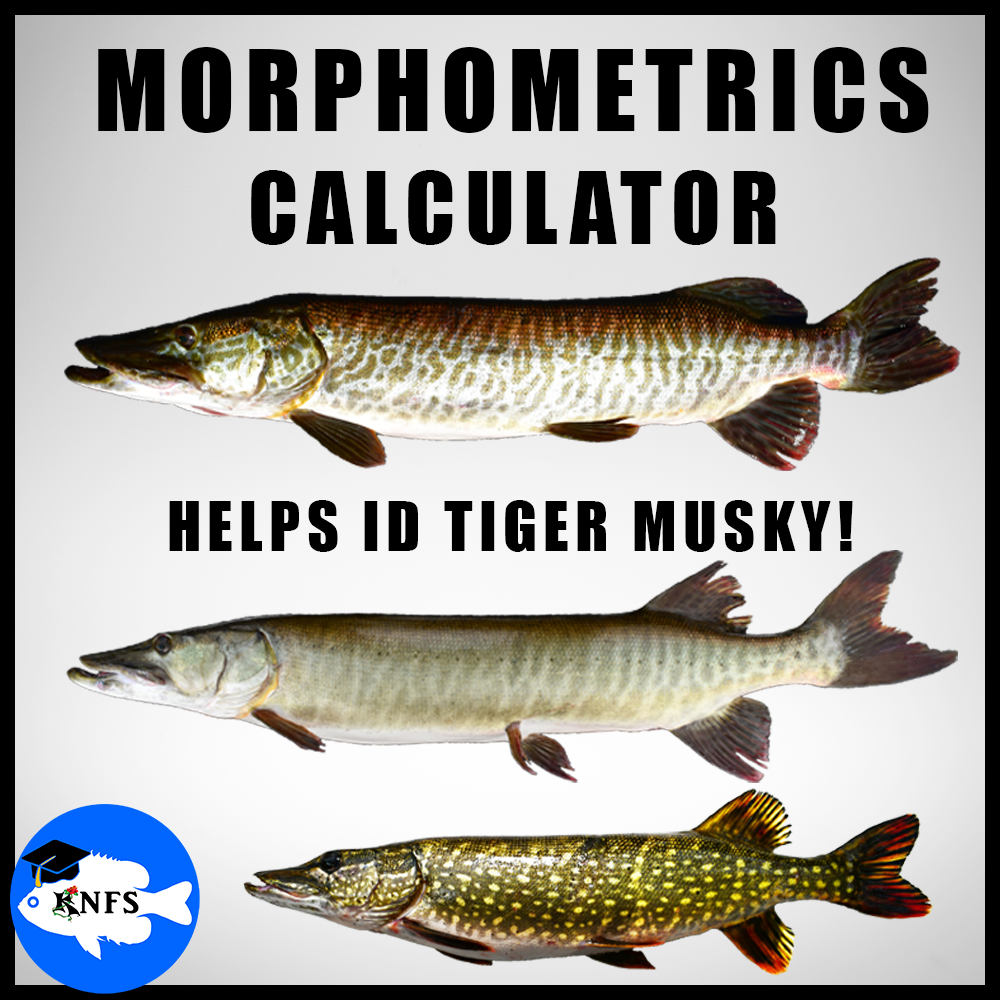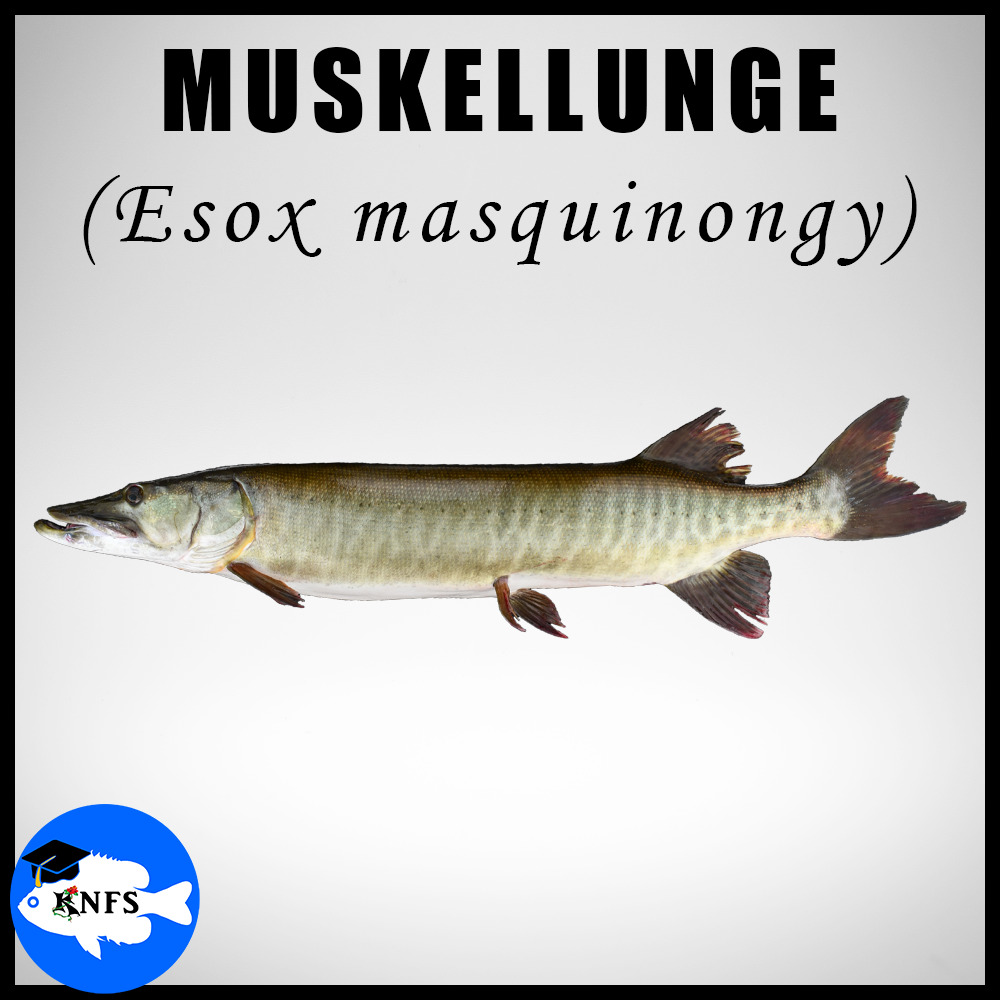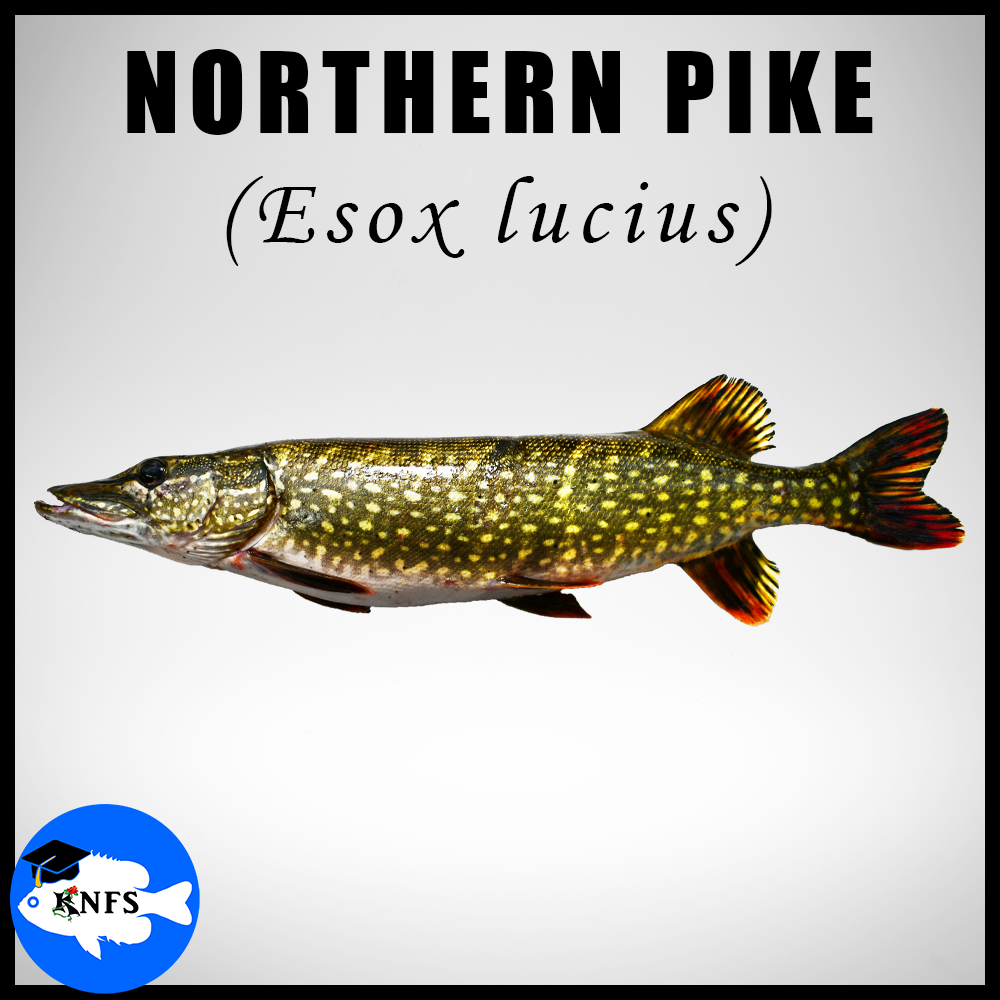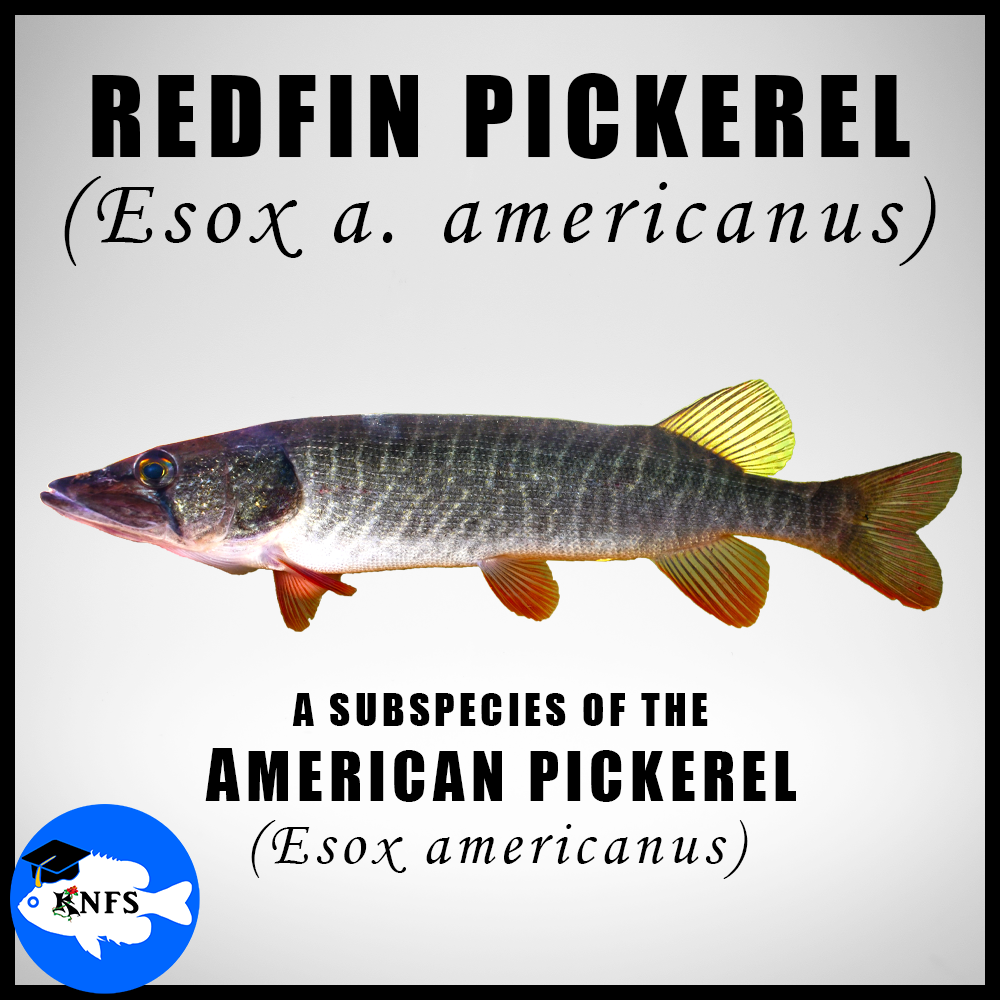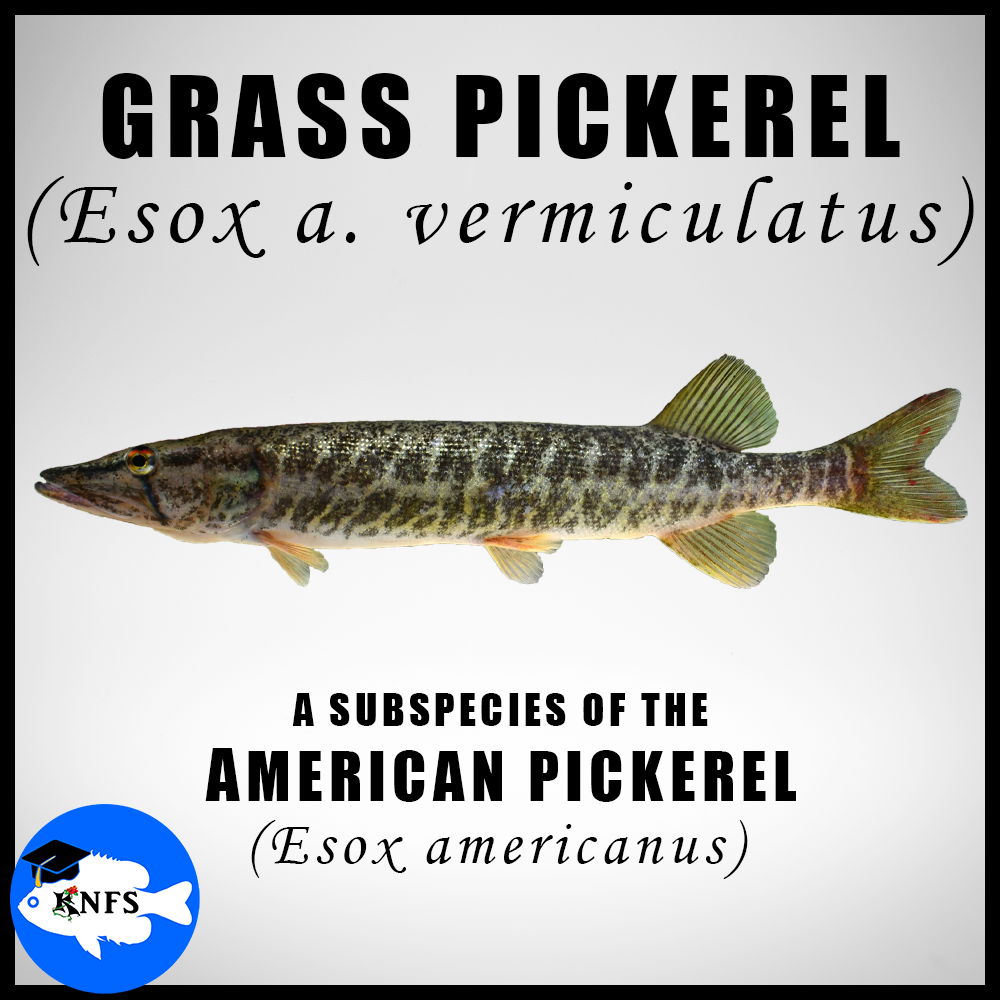FISH IN-HAND - NEED QUICK ID? -
If you’re in a rush with a possible tiger musky in-hand at this exact moment and need a quick ID then use the Quick Esox ID App—this may or may not give you a confident ID. Keep your fish in the net in the water with the head submerged when not examining and/or taking photos of the fish.
FISH IN-HAND - NOT RUSHED? -
If not in a rush, and have a fish in-hand with the intention of releasing and identifying it later, then place the fish down on a cool, wet surface and capture these photos:
Lateral Photo - A photo of the entire side of the fish as the fish lies flat.
Head Photo 1 - Side shot of head from snout to gill plate.
Head Photo 2 - Underneath shot of the bottom of the jaws that includes the pores.
Head Photo 3 - Straight down on top of the head.
Branchiostegal Rays Photo - Make sure the branchiostegal rays are splayed-out and countable in at least one photo.
If able, place a flat measurer adjacent to the fish in the lateral photo of the body as well as the photo with the top of the head.
READY TO LEARN THIS ID SKILL? - This page is meant to prepare an angler/researcher for identifying their future hybrid catches and/or identify a previously caught specimen either from photos or a physical specimen. We’ll discuss in detail what features to examine.
By Koaw 2023,
HYBRID INTRO: The tiger muskellunge, tiger musky, or tiger muskie (Esox masquinongy x Esox lucius) is a hybrid esocid between the muskellunge (Esox masquinongy) and the northern pike (Esox lucius). Both parental crossings produce viable offspring. The crossing of a female muskellunge and male northern pike produces more desirable offspring, therefore, this parental crossing is most often stocked by fisheries managers for both sportfishing as well as managing other fish populations. [1-4]
Though hybrids are uncommon to encounter, the tiger musky is the most encountered hybrid within the genus Esox, both naturally and artificially produced. [5] (More tiger muskellunge background information found on the TIGER MUSKELLUNGE ID PAGE.)
The tiger muskellunge (E. masquinongy x E. lucius) is almost exclusively confused with pure muskellunge (E. masquinongy). A tiger musky will never appear like a northern pike at most developmental stages, however, all species of Esox are extremely difficult to distinguish as fry and up to about 3 inches. Many muskellunge in Minnesota and Wisconsin may very closely resemble tiger muskellunge.
Aside from young specimens, the tiger muskellunge is easily distinguished from its northern pike parent.
THIS SPECIMEN: Today we’re going to breakdown, step-by-step, how to identify a possible specimen of a hybrid tiger muskellunge. The specimen that we are analyzing is a 36 in (91 cm) adult that was caught in Northern Wisconsin in a mostly clear-water lake. The fish was caught by Jim Zaczek. I was present to take photos.
PHOTOS: If you suspect that you have a hybrid of any type of fish then take as many photos as possible of all possible angles. Be quick and don’t keep the fish out of the water for more than a minute or so. Ideally your photos should be able to see the # of submandibular pores underneath the jaw, the scalation on the cheek & operculum, the # of branchiostegal rays, and the # of lateral line scales. Photos of the fins displaying each ray may be helpful, specifically the dorsal and anal fin. Photos of the underside between the pelvic fins may be beneficial.
Definitely get a lateral photo of the whole fish and a photo of the top of the head that is straight down above the fish for the Morphometrics Calculator. Having a flat measurer in each photo is also helpful for reference but not necessary.
Apparent damage to the tissue on and above the maxilla & supra-maxilla as well as damage at the base of the cheek and preopercle.
SAD BUT GOOD: Unfortunately, this fish was extremely exhausted after capture, even after a fairly quick fight from rod-and-reel. A previously-embedded musky lure was piercing the external left side of its mouth and this area appeared infected and heavily damaged.
We were able to cut the hooks from the other lure without causing more damage to the mouth. In our attempts to not stress the fish, photos were taken hastily and I did not capture all the photos that I should have, particularly the top of the head shot. This fish was released very quickly after photos. We tended to the fish for about twenty minutes in the water until we were sure it was capable of swimming off and not going belly up. This fish was actually rather fortunate to have been captured so that we were able to remove the big lure.
You may notice that I’ve flipped some of the photos so that the right-side (non-damaged side) may appear to be the left-side of the fish.
HYBRID OR NOT?: Before an analysis of a hybrid can begin the angler/researcher must suspect the possibility of a hybrid. Typically, hybrids will not express the coloration/patterning of any pure species. This inherently means that the angler/researcher must already have a good familiarity with the pure species within Esox.
Although most features on a hybrid will be intermediate between the parent species, there will be some features that resemble more closely or almost entirely towards one parent species. At various stages of development some hybrids within Esox may resemble almost entirely like one parent species.
Click to enlarge.
Typically, a tiger muskellunge has an elaborate pattern along the body & head. Some pure muskellunge also have elaborate patterns along the body and even patterning on the head, though the patterning on the head is often just light spotting. Any fish that looks like a muskellunge with bars and bars/spots should be examined to be a potential hybrid tiger muskellunge.
Ideally, it’s a good idea to run a quick meristics/morphometrics/patterning check on any fish that looks like a muskellunge, of which, we’ll cover how to do on this page. Once familiar with what to look for, it’s possible to analyze enough features on most tiger muskellunge and muskellunge in under a minute.
Based on coloration and patterning, this fish looks like a tiger muskellunge or a muskellunge. A hybrid analysis makes sense to carry out.
The hybrid under analysis was caught in N. Wisconsin. Only two species of Esox have established populations in this range.
POSSIBLE PARENTS FROM RANGE: When identifying hybrids, it’s important to identify all possible pure species that could be parents. In this northern region of Wisconsin, only two possible species could be parents. The muskellunge (Esox masquinongy) and the northern pike (Esox lucius). The grass pickerel (Esox americanus vermiculatus) is present in Wisconsin, but only in the southern part of the state.
Having only two possible parent species makes this hybrid breakdown process that much simpler. We’ll still be vigilant to notice any features that may be outside these two species just in case some prohibited stocking took place in this region, adding the possibility of another parent species.
For the most part, we can be almost absolutely sure that this fish is either a muskellunge or a tiger muskellunge. (Remember that the tiger muskellunge doesn’t ever have patterning/coloration like northern pike except for the youngest of young.)
EXAMINE THE TOP FOUR MERISTICS: — Remember the 4! —
1. Examine the scalation of the cheek & operculum.
2. Count the lateral scales along the lateral line.
3. Count the submandibular pores.
4. Count the branchiostegal rays.
These four meristic features should always be checked; same is done when verifying pure species. These meristics will clear up the vast majority of tiger muskellunge IDs. Patterning is also valuable to examine and, if needed, the Morphometrics Calculator offers a next-level for identification, both discussed more down below.
The Quick Meristics Key App analyzes these four meristics. Let’s get into the details of each one.
Click to enlarge.
SCALATION OF THE CHEEK & OPERCULUM: This should always be the first feature to examine on any esocid. With tiger muskellunge and muskellunge, these two fishes generally will express different scalation on the cheek and similar scalation on the operculum. Ergo, examining the cheek is most important when suspecting a tiger muskellunge.
The muskellunge has a partially scaled cheek, usually around 10-50%, sometimes 60-70%, and rarely up to 80%. Tiger muskellunge will typically have a mostly scaled cheek, usually between 80-100%, resembling the scalation on the cheek of northern pike that’s often between 90-100%, sometimes as low as 70%. [5-7]
Our hybrid under analysis clearly shows a cheek with scalation that resembles a tiger muskellunge with coverage at 90-95%. This is a very strong piece of evidence to suggest tiger muskellunge. However, examining only 1 feature is never enough for a confident ID—the more evidence the better.
LATERAL SCALES: Conveniently, there is not much overlap between tiger muskellunge and muskellunge lateral line scales. Typically, muskellunge show 145-160 lateral scales along the lateral line with a range of 140-176. The tiger muskellunge typically shows 125-145 lateral scales. [5-8]
When counting lateral scales, it’s always better to count twice and average the two results.
Click to enlarge.
Our hybrid under analysis shows about 135 lateral scales and clearly fits outside the range of the muskellunge for this feature and instead within the range of the tiger muskellunge.
So far, after only examining two features, both of which sit outside normal variance for muskellunge and within normal variance for tiger muskellunge, we have good certainty that this fish is a tiger muskellunge. More evidence is always better.
SUBMANDIBULAR PORES: The pores on the underside of the jaw may or may not be helpful for examining a tiger muskellunge. There is a fair amount of overlap. Though, it’s always important to check these submandibular pores. On specimens larger than 12 in (30 cm), these pores will be easy to see. Smaller specimens may require a magnifying glass. Only count obvious, fully developed pores. Pores that have merged are typically counted as a single pore. Undeveloped pores often look small and closed.
If summing the counts of submandibular pores from each side, the muskellunge typically shows between 12-18 submandibular pores, where counts of 19 & 20 are less frequent. Though rare, a 6/5 count, or 11 count in total, may appear on a muskellunge; usually this 6/5 count appears on a muskellunge because of merged pores.
The tiger muskellunge usually shows a range of 9-13 pores. Counts of 14-16 appear ~25% of the time. I’ve only discovered a single accounting of a tiger muskellunge having 17 (9/8) submandibular pores. [9]
Our hybrid in question has a 5/6 count of submandibular pores, 11 in total. This fits well within the normal variance of a tiger muskellunge and sits just outside the normal variance of a muskellunge. However, like mentioned, a 6/5 count may rarely appear on a muskellunge. Though, Casselman et al. (1986) suggested that if a fish that looks like a muskellunge or tiger muskellunge and has either 4/5, 5/5, or 5/6 submandibular pores, then it “will be a hybrid.” [6]
This 5/6 count adds more confidence that this hybrid under analysis is a tiger muskellunge.
BRANCHIOSTEGAL RAYS: Counting the branchiostegal rays is the least important of the top 4 meristics to examine for this possible hybrid type. However, there is a small range of non-overlap between muskellunge and tiger muskellunge that would contribute confidence to an ID.
Muskellunge typically show 16-20 branchiostegal rays on a single side. The tiger muskellunge usually shows anywhere from 12-20, usually on the higher end of that range. Any branchiostegal ray count of 12-14, even 15, would very much suggest tiger muskellunge over muskellunge.
Our specimen in question has 17 branchiostegal rays on the right side (shown in the adjacent image) and 20 on the left side (not shown). Both of these counts fit within the expected range of both the tiger muskellunge and muskellunge.
THIS ID SO FAR: The evidence all points towards this fish being a tiger muskellunge. The cheek scalation is 90-95% and the lateral scale count is 135, values that fit well within tiger muskellunge range and outside of muskellunge range. The submandibular pore count of 5/6 strongly suggests a tiger muskellunge over a muskellunge. The branchiostegal ray count does not offer help for differentiation.
This ID could be decided right now with very high certainty: This fish is a tiger muskellunge. But let’s go deeper because some tiger muskellunge could have meristics that completely overlap with the muskellunge for the four features we just analyzed.
PATTERNING AND COLORATION: Patterning and coloration should never be the sole basis for an identification within Esox. Like we’ve mentioned already, some tiger muskellunge and muskellunge are almost indistinguishable if just looking at their patterning and coloration. Yet, patterning does remain an absolute asset for identification in combination with the meristics.
Since we are analyzing an adult, we should compare coloration and patterning only on adult specimens of muskellunge and tiger muskellunge. Juvenile features are discussed on the individual species pages.
Color is often difficult to describe adequately when describing fishes because we, the observers, all see color differently and some people do not see color at all. Muskellunge and tiger muskellunge may have very similar colors. However, the mature tiger musky does not usually take on the pale, very light tan color on most of the body that some muskellunge have. The most apparent color difference is that tiger muskellunge most often have a somewhat darker patterning.
HEAD - First examine the head. Most all tiger musky will have an elaborate pattern on the head, particularly on the cheek/operculum and under the eye; this pattern is very similar to the pattern seen on the body. Our specimen under analysis has a variety of spotting, irregular lines, and even a nice leopard spot on the opercle bone. Muskellunge will almost never have such an elaborate pattern on the head. The musky phenotypes that have spotting on the body will often also show spotting on the head, though this spotting is often less in amount and a lighter shade of brown or even gray.
BODY - Tiger muskellunge will most often have pronged bars that make a Y shape. We can see these pronged bars on our specimen. Mature muskellunge do not usually have any of these pronged bars, though, some musky will. The ‘chain-link’ seen on our specimen is also uncommon on muskellunge—except, there are some spotted muskellunge that will show chain-link and/or leopard spots.
The pattern on our specimen is very irregular, seeming not as symmetrical as what is typically seen on muskellunge. The barring and even spotting pattern on tiger muskellunge usually seems less organized and more crowded compared to muskellunge. Most muskellunge with the barring pattern show thicker bar widths compared to the adjacent pale spaces while on the tiger muskellunge these dark and pale areas on the body are usually about the same width.
The color on the fins and even the spotting pattern is quite variable on the tiger muskellunge. Typically, the tiger muskellunge will have more, darker spotting in the fins, particularly the anal, dorsal, and caudal fins compared to muskellunge.
WHERE WE’RE AT: The meristics definitely point towards tiger muskellunge. The patterning on the head and body also strongly suggests tiger muskellunge. This is more than enough evidence to call the ID. Yet, we can go a bit deeper, of which, may help on trickier-to-ID specimens.
MORPHOMETRICS: The morphometrics on a fish are just measurable features that can be compared against one another. Morphometrics describe shapes and lengths that we often can just detect with our naked-eye.
FIN SHAPE - The muskellunge tends to have pointier fins that are flatter on the distal side while northern pike show rounder distal edges of the fins. The tiger muskellunge tends to show rounder fins like the northern pike parent. The tiger muskellunge also tends to have larger fins compared to the muskellunge, most noticeable perhaps on the caudal and anal fin. These fin features are not that helpful for most anglers to use while out fishing because it requires a really good familiarity with each parent species. Also, hybrids are odd and may end up showing more musky-like fins.
HEAD & BODY SIZE - Typically, an adult tiger muskellunge is going to have a larger head length vs. the standard length than a muskellunge’s head length vs. standard length. The body of the mature tiger muskellunge will be more robust and shorter than a muskellunge of similar size. A combination of morphometric features like these can be examined in the calculator below.
MORPHOMETRICS CALCULATOR: I created an app on another page that uses an equation proposed by Casselman et al. (1986) that takes the morphometrics of a fish and determines if those values fit within the expected ranges of muskellunge, tiger muskellunge, and/or northern pike. I’ve shown how to use this calculator in the video associated with this hybrid breakdown, though, the calculator is fairly straightforward.
Just take some measurements and plop the numbers into the calculator to get a score.
The calculator uses ratios. Any units of measurement can be used (pixels, inches, centimeters, etc.) as long as the method of measuring uses the same units within the same realm (same photo, actual specimen). You can analyze your fish from photos.
This calculator only really needs to be used for extra confidence on an ID, such as when the meristics for a specimen are all overlapping for features of musky and tiger musky.
SCORE FOR THIS FISH: The morphometrics calculator reveals a score of 1.606 (calculating without IOW—see video). This score falls within the expected range of the northern pike and tiger muskellunge, ergo, this score confidently suggests tiger muskellunge over muskellunge.
FINAL ID: This fish is most assuredly a tiger muskellunge. All features examined are within the expected ranges of the tiger muskellunge (Esox masquinongy x Esox lucius) and 3/4 of the top meristic features to examine fall outside normal muskellunge range.
SUMMARY OF THE ANALYSIS:
The fish under analysis looks like a tiger muskellunge and somewhat like a muskellunge, ergo a hybrid analysis should occur.
The only two possible parent species of Esox within the range of this fish’s origin are the muskellunge and northern pike.
The operculum is partially scaled. This resembles both parent species.
The cheek is mostly scaled at 90-95%. This most resembles a tiger muskellunge.
The lateral scales count is 135. This count falls within the expected range of the tiger muskellunge and not of the muskellunge.
The submandibular pore count is 5/6, or 11 in total. This strongly suggest tiger muskellunge rather than muskellunge.
The branchiostegal ray count of 17 on the right and 20 on the left could be explained by either tiger muskellunge or muskellunge.
The head on this fish has an elaborate pattern with plenty of spots, wavy lines, and even a leopard spot. This head much more closely resembles a tiger muskellunge.
The body has a darker, crowded pattern not often seen on muskellunge. There are numerous pronged bars making a Y shape. There are ‘chain-link’ markings. The darker barring pattern is fairly similar in width to the paler regions between.
The roundly fin shapes and overall fin-sizes suggest tiger muskellunge over muskellunge.
The head is more massive and the body shorter compared to a typical muskellunge of this size.
The morphometrics analysis revealed a score of 1.606. This score falls within the tiger muskellunge/northern pike range, thus, strongly suggesting tiger muskellunge.
This fish is a tiger muskellunge.
[1] S. A. Weithman and R. O. Anderson, "Survival, Growth, and Prey of Esocidae in Experimental Systems," Trans. of the Amer. Fish. Soc., vol. 106, no. 5, pp. 424-430, 1977.
[2] M. J. Divens, P. W. Baker, B. D. Bolding and R. S. Osborne, "Tiger Muskellunge Growth, Condition, Diet, and Effect on Northern Pikeminnow at Curlew Lake, Washington," Am. Fish. Soc. Symposium, vol. 85, pp. 135-148, 2017.
[3] T. W. Storck and D. L. Newman, "Contribution of Tiger Muskellunge to the Sport Fishery of a Small, Centrarchid-Dominated Impoundment," N.A. J. of Fish. Manag., vol. 12, pp. 213-221, 1992.
[4] M. K. Koenig, K. A. Meyer, J. R. Kozfkay, J. M. DuPont and E. B. Schriever, "Evaluating the Ability of Tiger Muskellunge to Eradicate Brook Trout in Idaho Alpine Lakes," N.A. J. of Fish. Manag., vol. 35, pp. 659-670, 2015.
[5] E. Crossman and K. Buss, "Hybridization in the Family Esocidae," J. Fish. Res. Bd., vol. 22, no. 5, 1965.
[6] J. M. Casselman, E. J. Crossman, P. E. Ihssen, J. D. Reist and H. E. Booke, "Identification of Muskellunge, Northern Pike, and their Hybrids," Am. Fish. Soc. Spec. Publ., vol. 15, pp. 14-46, 1986.
[7] S. Eddy, "Hybridization between Northern Pike (Esox lucius) and Muskellunge (Esox masquinongy)," Jour. of the Minn. Acad. of Sci., vol. 12, no. 1, pp. 38-43, 1944.
[8] Koaw, "Select Morphometrics and Meristics of Esocids," Koaw Nature - KNFS, 2023.
[9] J. D. Black and L. O. Williamson, "Artificial hybrids between muskellunge and northern pike.," Trans. of the Wisc. Aca. of Sci., vol. 38, pp. 299-314, 1946.




